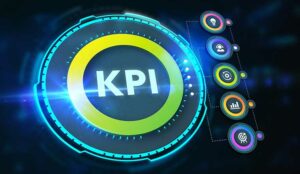Jim Freeze of Interactions shares how he recommends measuring and calculating customer success in the contact centre.
The way we communicate with brands is changing. For example, modern customers prefer self-service channels that allow them to find solutions themselves, and more quickly, rather than waiting in a queue to get to a live agent. They have expanded their channel offerings in order to improve customer experience.
Because of this shift, brands are now more focused on customer experience rather than simply reducing costs. Companies have adopted new technologies in their contact centres to support a more customer-first approach.
Before this change in focus to customer experience, contact centres had a straightforward goal: to handle as many calls as possible, as quickly as possible. As company strategies have shifted, the goal has also shifted to include making customers happy.
Contact centres are now tasked with engaging and delighting the customers, and not just containing and deflecting customer calls. With a new goal in mind, the contact centres have also shifted the way that we measure success.
Traditional Contact Centre KPIs
Let’s take a step back. How did contact centres used to operate? If they weren’t focused on customer experience, what were they focused on?
Simply put, they wanted to keep costs low. This translated to the goal of interacting with as many people as possible, in the shortest amount of time.
Average Handling Time (AHT) was, and still is, one of the most important metrics used in contact centres. It promotes contact center teams to increase efficiency and address a high volume of calls. The more calls in the shorter amount of time means a lower cost per call. This is also referred to as a Cost per contact (CPC).
Again, signaling that the ultimate goal of these centres is to reduce costs. Neither of these metrics take into account the customer experience, or if the customer’s query was solved.
Another metric that is traditionally used is First Call Resolution (FCR). FCR is the total number of calls that are resolved correctly on the first attempt, divided by the total number of calls in a given period of time. This metric starts to lean toward a focus on customer service.
A further step into a more customer experience centric metric is Customer Satisfaction (CSAT), which is still very relevant today. CSAT is a score that is calculated, usually on a scale of 1-10, depending on how satisfied the customer was with the interaction.
Changing the Focus
When customers are happy with an experience, they will have a positive perception of the brand and come back for more. So, it seems obvious that we should be focusing on customer experience above all. It leads to customer loyalty with your brand, and word-of-mouth marketing to follow. In the long run, revenue and profits are increased by keeping customers happy.
According to a report by PwC, even if people love your company or product, in the U.S. 59% will walk away after several bad experiences, 17% after just one bad experience. That can cost a lot to your brand, and these make-or-break moments usually happen in contact centres or at customer care touchpoints.
Focusing on engagement and retention are two great ways to measure success in new age contact centres. Instead of measuring how quickly we are able to handle calls, like with AHT, we should be measuring if customers are coming back.
When using AHT, the handling time may have been long, but the customer could have had a great experience and will buy again. Alternatively, AHT could be very short because the customer experience was bad. To continue to increase revenue, customer retention is important.
Another factor to consider is consistency across brand touchpoints. Customers should have a similar experience no matter how they interact with the brand, especially when dealing with both automation and live agents.
With the influx of technology that has been introduced, it is easy for channel owners to lose uniformity in how the brand voice and style are showing up.
Of course, operational costs should still be a factor. Businesses are, after all, always striving to reduce operational costs and increase revenue. With the shift in consumer demands, contact centres are struggling to balance between offering a stellar customer experience and reducing operational costs.
However with the right technology, they don’t have to choose between the two. Implementing a conversational AI system, like our IVAs, exponentially increases the number of calls that are able to be handled without relying solely on live agents.
This allows contact centres to handle more interactions even during the peak volume season without driving up costs and successfully scale up.
Author: Robyn Coppell
Published On: 8th May 2019
Read more about - Guest Blogs, Interactions



































